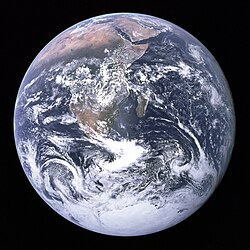User:D0li0
This is my User Page and as with most things is a work in progress, enjoy! I also have a page at:
- -= seattleeva.org == eaa-phev.org == User:D0li0 =-
- WikiBooks:User:D0li0
- MetaWikiPedia:User:D0li0
- http://www.mediawiki.org/wiki/User:D0li0
- peswiki.com PES:
- d0li0.blogspot.com
- youtube.com/profile?user=D0li0
- My Video.Google.com

Stay a while!
So, you made it here, this page is a work in progress as most everything is. As near I can tell all of this started at Project Gutenberg or maybe it was the Big bang, anyway that's all in the past. Moments ago it was 2025/04/20 15:31UTC, which at the time was the present. Here comes the Future; you know my favorite thing about time is that it prevents everything from happening all at once, personally I don't deal with this particular aspect of the universe very well.
Please see also some of my favorite pages:
Renewable energy, Future energy development, Electric vehicles (BEV, PHEV, HEV), SEVA, EAA-PHEV, Conservation of energy, Fundamental interaction, Shape of the universe, Nikola Tesla
- My Contributions, Current Edit Count, Watchlist
- HELP Simplified Ruleset, Namespace, Wiki markup.
- Look into Welcoming committee, Wikipedians against censorship, WP:STAR
- I support Cindy Sheehan and do not particularly like George W. Bush.
- Iraq US Deaths, official, 9,000. Triple Trifecta
- I may suffer or benefit from Asperger's Syndrome?
My Favorite Licensing Tag
[edit]comment: Image is my own original work and released under GFDL and Creative Commons Attribution-ShareAlike 2.5 License {{self}}
Working on
[edit]| This user is a participant in WikiProject Automobiles. |
- Talk:Plug-in_hybrid_electric_vehicle/PIA_Rewrite
- Wikipedia:WikiProject Environment Category:Hybrid vehicles
- Energy development, Renewable energy
- Work in Progress: evparts faq --> WikiFAQ
- add : EM Thread, Thread http://www.electricmotorcycles.net, ems, drag bikes, sparows, 3-wheelers Thread SAM Cree.ch 2 seat Tandum, Tango(as crossover). [1]
- add : BEV Batteries : 6V Myth, Best Flooded Battery Ni-Cad info from A&P General Book
- new pages Battery pack -> Chargers
- Organize Li-ion BEVs [2], [3], others on BEV page.
- fix for new gas prices: Image:Fcvgc-updated.gif
- Talk:History_of_the_electric_vehicle
Picture of the Day
[edit]The Idea of Battery Electric Vehicles
[edit]The primary advantage of a BEV is that all aspects of it's creation, opperation, and disposal are well withing the relm of managability. Unlike FF based societies in which there is no way to manage the conversion process from higher energy HC to lower energy CO2. There is no way to replace the HC nor manage the CO2 output of such systems. Nuclear energy while more managable than FF due mostly to their far greater energy densiy are still nothing more than a change of state of a finite material resource. BEVs and renewable energy on the other hand can be build with renewable energy, run on renewable energy, and be recycled at the end of their cycle lives, all of which is managable and systainable indefenently.
There have been rescent and significant advancements in high power and cycle life Lithium-ion batteries which could vastly improve the viability, longevity, range, and recharge times if applied to BEVs.
See Supercapacitor as well.
Perhaps it would help to clarify the somewhat confused understanding and difficulties in convaying the ideas behind various "Hybrid vehicles" by more accurately defining the specific aspects of such vehicles employing multiple technologies. The aspects which are Hybrid in nature could include but are not limited to Powered, Fueled, and/or Storage. So when categorizing a Hybrid vehicle one should mention which technologies (ie: GAS/ICE, Diesel/ICE, NG/ICE, LPG/ICE. H2/ICE, Electricity/Batteries/Motors, Hydrogen/Fuel Cell/Motors, Human/Peddles) are employed and the nature of their use. Such as Gas-Electric Powered or Diesel-Hydrogen Fueled.
Made some changes to a page and got it deleted!? :(
Lithium batteries hold quite a bit of potential.
A Wikipedia Periodic Table imagemap which might be applicable to each elements table image. It won't work here due to it requiring html tag support, but it does work here: http://www.seattleeva.org/wiki/User:Rjf/Clickable_Periodic_Table
Watchlist RSS feeder
[edit]Humm, can't seem to make ruby run the scripts above, something about missing the scan dependency? So how about a quick and dirty perl script? Just copy the watchlist source to a wikipedia.watchlist.source file and run it through this:
#!/usr/bin/perl # $site="http://en.wikipedia.org/w/index.php?title="; @list=`cat wikipedia.watchlist.source | grep "checkbox"`; foreach (@list) { if ($_ =~ /.+href="\/wiki\/.+"\ .+href="\/w\/index.php\?title=(.+)&action=history".+/) { push(@articles,$1); } } print "<opml version=\"1.0\">\n<head><title>Subscriptions For an RSS Reader</title></head><body>\ <outline title=\"Wikipedia_Watchlist\" text=\"Wikipedia_Watchlist\">\n"; foreach (@articles) { $title="$_"; $article="$_"; &do_entry; } foreach (@articles) { $title="$_" . ":Talk"; $article="Talk:" . "$_"; &do_entry; } print "</outline></body></opml>\n"; exit(0); sub do_entry { print "\t<outline text=\"$title\" title=\"$title\" type=\"rss\"\ \t\txmlUrl=\"$site$article&action=history&feed=rss\"\ \t\thtmlUrl=\"$site$article&action=history\"/>\n"; } # ##

